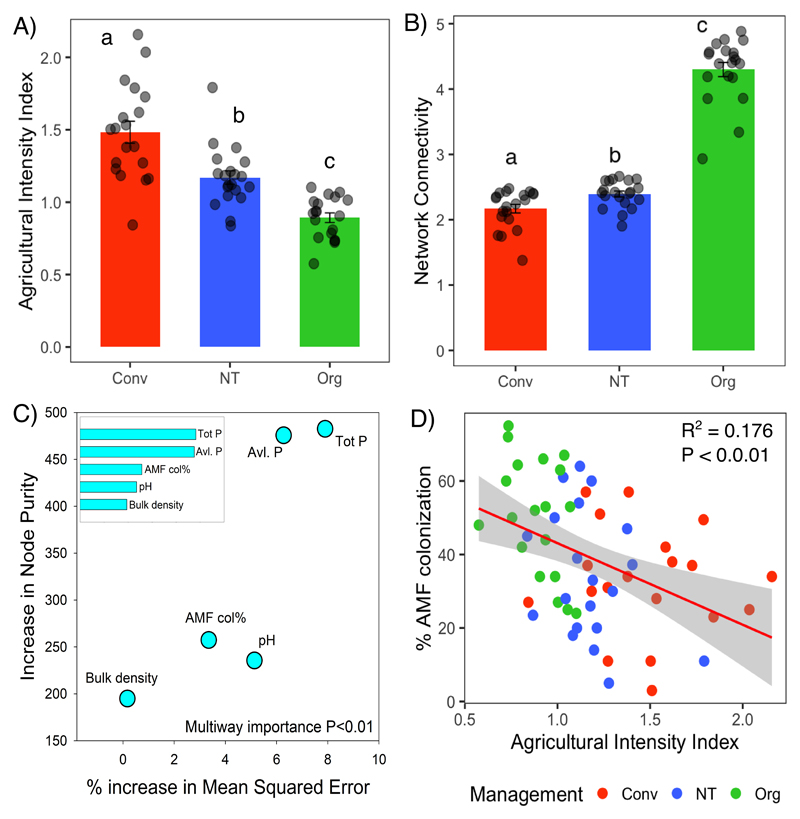Figure 5.
A) Agricultural intensity index across conventional (Conv), no-till (NT) and organic (Org) farming systems. Agricultural intensity index was estimated using information on three anthropogenic input factors: fertilizer use, pesticide use and the consumption of fuel for agricultural machineries. Different lowercase letters indicate statistically significant (P<0.05) difference between farming systems. B) Network connectivity as represented by node degrees for individual farms calculated by subsetting the networks of three farming systems. Different lowercase letters indicate statistically significant (P<0.05) difference. C) Results of random forest analysis showing the relative contribution of various factors in determining the abundance of keystone taxa. The mean squared error (MSE) indicates the prediction accuracy of each factor. The top (P<0.01) five drivers were total phosphorus, plant available phosphorus (Olsen P), AMF root colonization, pH and bulk density. D) Relationship between agricultural intensification and mycorrhizal root colonization. Agricultural intensification had a significantly (P<0.01) negative impact on the root colonization of AMF. Agricultural intensity was the highest under conventional farming and the lowest under organic farming, which was opposite for the AMF colonization.

